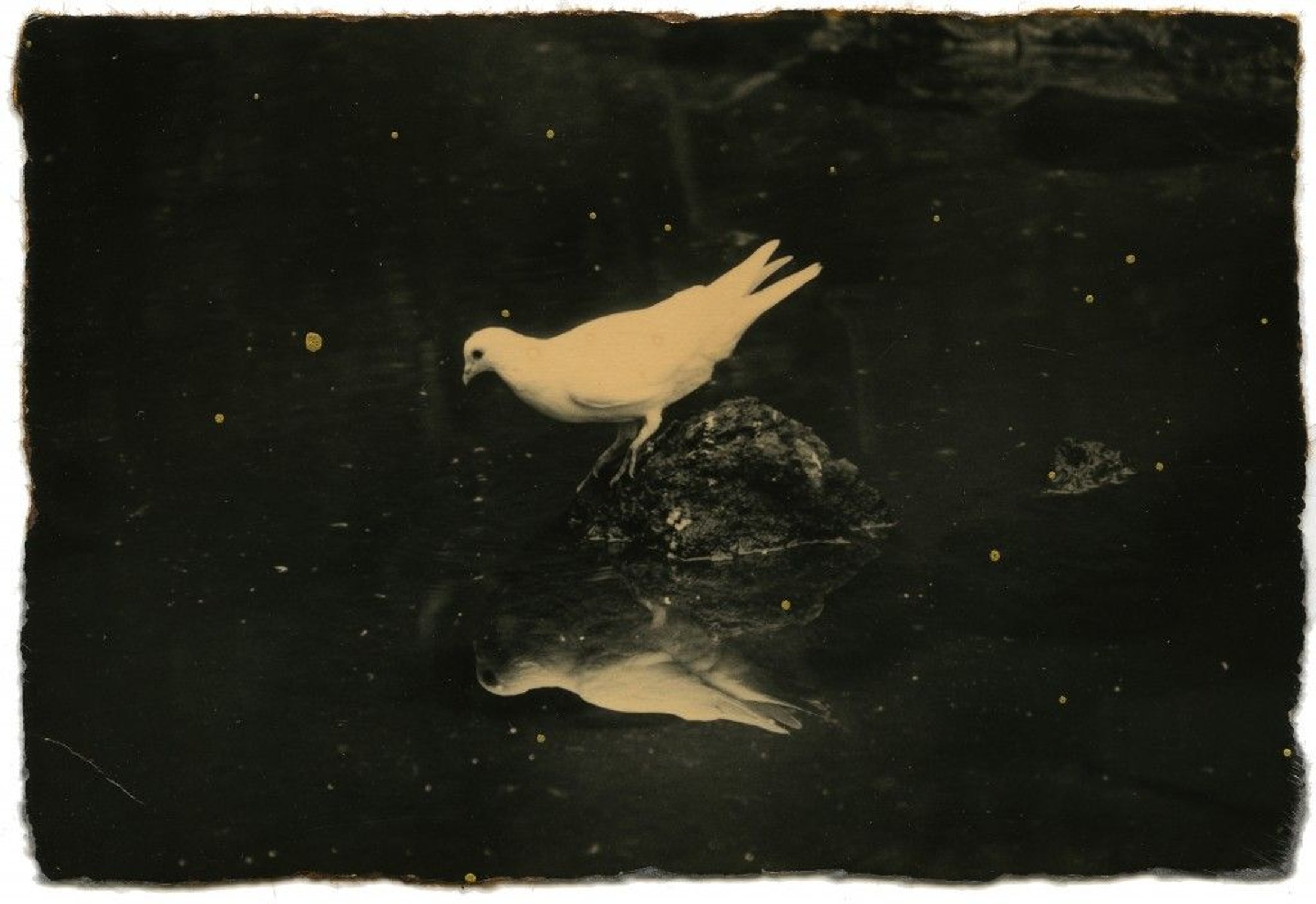Japanese photographer Masao Yamamoto has intrigued me since I first held several of his tiny energy-charged photos in my hands at a photography festival in California in 2003. I could not leave without taking three of these precious objects home with me (at a price I could barely afford at the time). Five years later, those same photos float on the wall in my home where I can see them every day, in all kinds of light, and they still exert that same emotional pull on me every time I stop to look at them.
I had the pleasure of meeting him in Paris in 2007 during an opening at Galerie Camera Obscura, and then we met again for lunch in November 2008. We spoke with the help of an interpreter. But what was even more memorable was the way he silently placed eleven of his small photos on a glass table and started to arrange and re-arrange them into a kind of visual haiku. Each slight shuffle changed the poetry and context, and the possibilities seemed almost limitless.
So, I was delighted to discover this brief video interview with Masao Yamamoto made by Laetitia Berthomé and Fabien Bosdedore (in Japanese, with French over-dub). Colleen Leonard, who has been contributing to Lens Culture, first pointed it out to us a couple days ago, and then, generously, provided this English translation:
Introduction:
“Masao Yamamoto is a photographer, born in 1957 in Japan. He studied fine arts and painting before finding his expression through photography. Since his debut in the 80s he has explored the emotional power of the intimate images that each one of us keeps with us as amulets.”
Yamamoto, talking:
“In the past, when I was a child, I collected insects. I have a tendency to collect things. As an adult, instead of killing the insects, I began to take photos of them to collect the images.
“When I photograph, I start out with an open mind. If I start out with a precise idea of what I want to photograph, I might miss an interesting event or object. So, I begin with an open mind and try to photograph all kinds of objects.
“As you can see, my photos are small and seem old. In fact, I work so that they’re like that. I could wait 30 years before using them, but that’s impossible. So, I must age them. I take them out with me on walks, I rub them with my hands, this is what gives me my desired expression. This is called the process of forgetting or the production of memory. Because in old photos the memories are completely manipulated and it’s this that interests me and this is the reason that I do this work.
“If I take small photos, it’s because I want to make them into the matter of memories. And it’s for this reason that I think the best format is one that is held in the hollow of the hand. If we can hold the photo in our hand, we can hold a memory in our hand. A little like when we keep a family photo with us.
“I construct a story by hanging several small photos. I don’t do it chronologically. Sometimes I start with the end, sometimes with the middle, I never know where I will start. I attach one, then another, and then a third. Even I have no idea of the story it tells before I start hanging. It’s only in the theoretic hanging that the sense appears to me.
“In fact it’s as if I’m climbing a staircase and at the same time picking up some lovely stones. Even if I had decided to only take the white stones, if I see a black one I like I’ll take it too. It’s the same thing when I’m hanging, the story unfolds in a random way.
“Long ago, there was a man named Ryokan, who was a calligrapher and a poet. I have an enormous amount of respect for him. In one of his Haikus he describes simply the movement of a leaf trembling as it falls. But in reality, this poem can be interpreted in several ways. For example the falling leaf could be a metaphor for life, the right side up, the bad, and the reverse side, the good. From this simple natural phenomenon he speaks of much deeper things. I find this remarkable. I would like to take these kinds of photos.
“For me a good photo is one that soothes. Makes us feel kind, gentle. A photo that gives us courage, that reminds us of good memories, that makes people happy.”
—LensCulture
Special thanks to Jackson Fine Arts.

Feature
Visual Haiku
The small poetic photographs of Masao Yamamoto seem to come from another era, filled with lost memories and nostalgia. In a great interview, the photographer talks about his work and passions.
View Images
Feature
Visual Haiku
The small poetic photographs of Masao Yamamoto seem to come from another era, filled with lost memories and nostalgia. In a great interview, the photographer talks about his work and passions.
Visual Haiku
The small poetic photographs of Masao Yamamoto seem to come from another era, filled with lost memories and nostalgia. In a great interview, the photographer talks about his work and passions.

